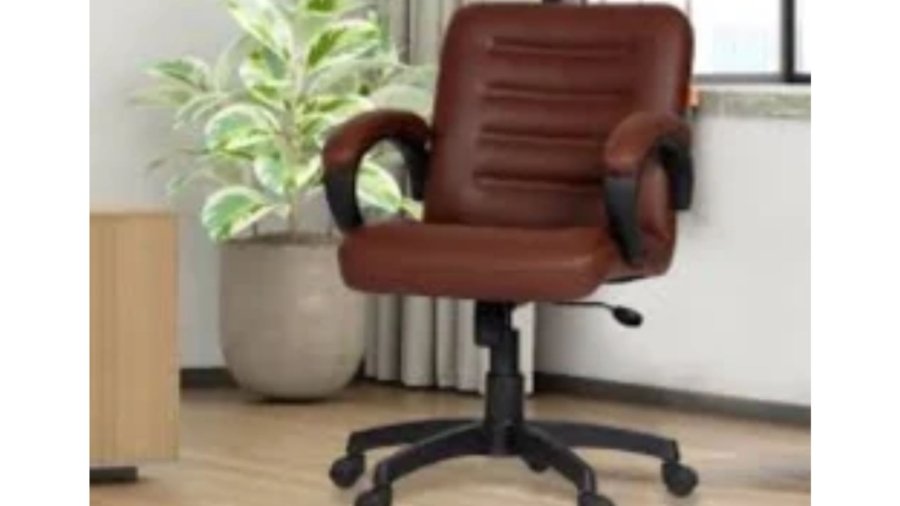Selecting the right ergonomic chairman chair for your office is crucial for ensuring comfort, productivity, and long-term health. A well-designed chair not only supports your body but also promotes good posture, reduces physical strain, and enhances your overall work experience. With a wide variety of options available in the market, it’s essential to consider several factors before making a decision. Here’s a detailed guide on what to look for when choosing the perfect ergonomic chairman chair.
1. Understand the Importance of Ergonomics
Ergonomics is the science of designing work environments that are comfortable and conducive to human well-being. A good ergonomic chair is designed to fit the body’s natural posture and reduce physical stress. This is especially important for office workers who spend long hours sitting. Poor posture and inadequate support can lead to back pain, neck strain, and other musculoskeletal problems. The right ergonomic chair provides proper lumbar support, encourages good posture, and adjusts to your body’s needs, helping to prevent these issues.
2. Consider Adjustability Features
One of the most important features of an ergonomic chair is adjustability. A chair that can be customized to suit your individual needs is essential for comfort and health. Look for chairs with the following adjustable features:
- Seat Height: The chair should have an adjustable seat height to ensure your feet are flat on the floor, with your knees bent at a 90-degree angle. This helps maintain a neutral posture, reducing stress on the lower back and thighs.
- Seat Depth and Width: The seat depth (the distance from the backrest to the front of the seat) should be adjustable to ensure proper support behind your knees while allowing for enough space for movement. The seat width should be wide enough for comfort, but not too wide to cause strain on the hips.
- Backrest Height and Angle: An adjustable backrest allows you to fine-tune the lumbar support to fit the curve of your spine. The backrest should provide lower back support, preventing slouching. The angle of the backrest should also be adjustable, allowing you to recline slightly and relieve pressure from the spine.
- Armrests: Adjustable armrests allow you to find a comfortable height for your arms, reducing strain on your shoulders and neck. They should be adjustable in height and width to accommodate different body types and working postures.
3. Look for Proper Lumbar Support
Lumbar support is essential for maintaining the natural curve of your spine. The lumbar region of the spine should be supported to prevent slumping and back pain. A good ergonomic chairman chair will feature adjustable lumbar support that can be positioned at the lower back area to fit your body’s natural curvature. Some chairs have built-in, fixed lumbar support, while others allow for customization to suit individual preferences.
4. Material and Upholstery
The materials used in the chair play a crucial role in both comfort and durability. When choosing an ergonomic chair, consider the following:
- Breathable Fabric: A breathable fabric helps to keep you cool during long hours of sitting. Mesh backs and seats are a popular choice for ergonomic chairs as they provide ventilation and reduce heat buildup, ensuring comfort throughout the day.
- Cushioning: High-density foam or memory foam padding can provide added comfort, especially in the seat and backrest areas. A chair with adequate cushioning will prevent pressure points and provide support for long periods of sitting.
- Durability: Consider the durability of the materials. Chairs with strong, high-quality materials will last longer and provide consistent support over time. Leather or high-quality synthetic materials are common in ergonomic chairs and provide a sleek, professional appearance while being easy to clean.
5. Chair Base and Mobility
The base of the chair plays a significant role in its stability and mobility. Look for a chair with a sturdy base, typically made from metal or reinforced plastic. The base should feature five casters (wheels) for easy mobility. This allows you to move around your workspace without straining or twisting your body. The casters should be suitable for the type of flooring in your office, whether it’s carpet, wood, or tile.
A swivel function is also essential. A chair that swivels makes it easier to reach different areas of your desk without straining your body. It promotes better movement and flexibility, reducing the need to stretch or twist unnaturally.
6. Style and Aesthetics
While comfort and functionality should be your top priorities, the style of the chair is also an important consideration, especially if you want your office to have a professional and cohesive look. Ergonomic chairs come in a variety of designs, from sleek and modern to classic and executive. Choose a chair that complements your office décor and enhances the overall atmosphere.
7. Test the Chair
Before making your final decision, it’s important to test the chair. If possible, sit in the chair for at least 15 to 20 minutes to assess comfort, support, and overall feel. Pay attention to how well the chair conforms to your body and whether it provides adequate lumbar support. Make sure all adjustments work smoothly and that the chair is easy to adjust while you’re seated.
Conclusion
Choosing the right ergonomic chairman chair for your office is an investment in your health and productivity. The ideal chair should offer a combination of adjustability, support, comfort, and durability. By considering features like lumbar support, seat adjustability, and material quality, you can find a chair that supports your body’s natural posture and promotes a healthy work environment. With the right ergonomic chair, you can reduce the risk of discomfort and strain, allowing you to stay focused and productive throughout the day.
Read More ( Click Here )

